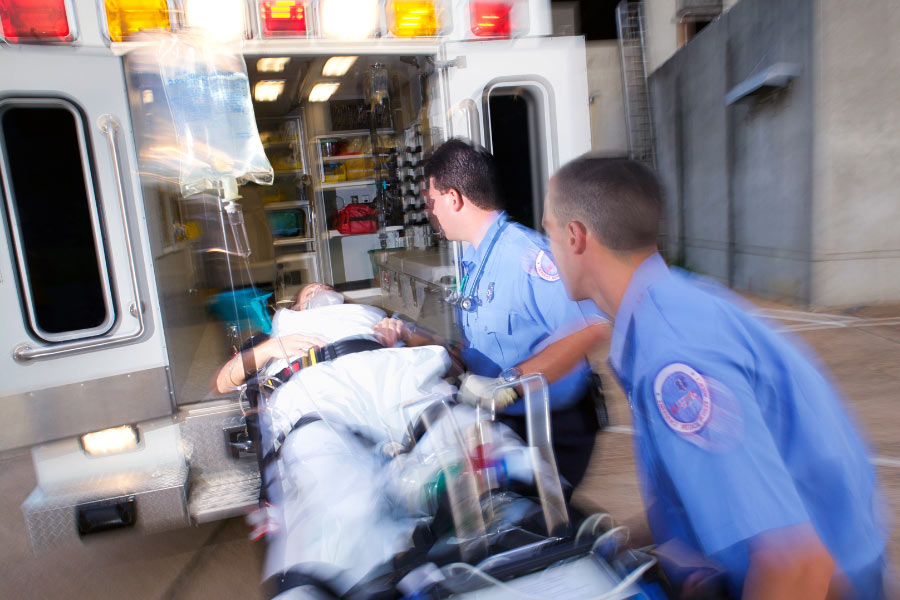
Accident Prevention for Longevity: Managing the Risks
Last Updated: December 20, 2023
Key Takeaways
Introduction
Living a long, healthy life requires avoiding fatal and debilitating accidents. Approximately 10% of people die of unnatural causes (i.e., from accidents) [1]. And avoiding being among them should be a priority of anyone serious about their longevity.
This guide discusses the top-five top causes of accidental deaths, offering practical strategies for preventing them from happening to you and your loved ones. It covers unintentional drug overdoses, vehicle accidents, falls, poisoning, and homicides. Examples of recommended action you should take to reduce risks include choosing safe vehicles, home modifications to prevent falls, carbon monoxide detectors, safe handling of chemicals, and understanding the risks of alcohol.
more from blueripple
How to Increase Your Intake of Antioxidants
Understanding the different kinds of antioxidants is an important part of increasing your intake of antioxidants safely and responsibly.

Unintentional Drug Overdoses
Unintentional drug overdose leads to a staggering 78,000 deaths annually in the US, with 75% of them involving opioids [2]. It may seem that abstaining from drug use is the best way to prevent these deaths. However, abstinence is not a feasible goal for the people who are most at risk for this cause of death [3].
Public-health strategies generally employ a four-part approach emphasizing prevention, treatment, harm reduction [4], and recovery support.
Applied to opioids, this strategy often takes the form of:
While there is a widely held view—particularly in the US—that people with substance-abuse disorders never recover, research demonstrates that 75% of them do eventually recover [9].
Car Accidents
Ensuring personal safety on the road is a vital aspect of reducing the risk of car accidents, a leading cause of accidental deaths. As an individual, there are several proactive steps you can take to protect yourself and others while driving.
These measures not only enhance your safety but also contribute to overall road safety:
Beyond taking personal responsibility for your safety on the road, policy makers, police departments, and automakers can also do their part in contributing to public safety on the roads. While research demonstrates that post-license driver education has no effect, other factors make a positive impact. Sobriety checkpoints, road-safety campaigns, replacing stop lights with traffic circles, and electronic stability control technology for vehicles all significantly decrease the number of accidents [13].
Falls
The statistics surrounding deaths from falls can be startling, especially considering that this cause of accidental death is often overlooked. With nearly 40,000 fatalities annually in the US [14], falls represent a significant risk, particularly for those over the age of 65. Understanding and mitigating these risks is crucial to your personal safety and longevity.
As you age, managing the factors that contribute to falls can play a critical role in preventing these often devastating accidents. Preventive measures include [15]:
“We must never forget that the highest appreciation is not to utter words, but to live by them.”
— John F. Kennedy
Poisoning
The danger of poisoning—excluding drug overdoses—is a significant yet often overlooked cause of accidental deaths. Each year, thousands of individuals die from various forms of poisoning, including carbon monoxide exposure and household chemical accidents. This stark reality underscores the importance of vigilance in identifying and managing sources of poisoning.
Poisoning is the leading cause of thousands of deaths each year in the US and contributes to hundreds of thousands more. Sources include:
Homicide
Accounting for over 15,000 deaths per year, homicide in the US is a serious public-health problem.
The relationship between the victim and offender typically deviates from public perception and Hollywood portrayals. For the 50% of homicides where the offender is identified, 25% of victims were killed by a family member, 55% by a friend or acquaintance, and 20% by a stranger [28]. Furthermore, according to a study conducted in Illinois homicide cases, over 40% of homicide offenders have been convicted of a felony in the previous decade, while over 70% have been arrested during that same timeframe [29]. In other words, if you are the victim of a homicide, you are most likely to be killed by someone you know with a criminal history. Therefore, your strategy for minimizing the risk of falling victim to this type of violence should include the following elements [30]:
The Complex Role of Alcohol in Accident Prevention
The impact of alcohol on accidental deaths is both profound and multifaceted, extending beyond the 2,500 annual deaths attributed to acute alcohol poisoning. In fact, alcohol contributes to over 140,000 fatalities each year [31], playing a central role in a range of incidents ranging from car accidents to physical altercations. The pervasiveness of alcohol in these scenarios is profound.
Alcohol dramatically impairs your ability to drive a car, significantly increasing the likelihood of fatal crashes. Even small amounts can affect judgment, reaction time, and motor skills [32].
Alcohol is also often a catalyst in violent altercations where impaired judgment and reduced inhibition can escalate conflicts into deadly incidents [33].
Less acute but no less dangerous, alcohol can drive irresponsible sexual behavior that results in contracting sexually transmitted diseases [34].
Understanding and managing personal alcohol consumption is, therefore, a crucial aspect of risk mitigation. This ability includes awareness of one’s limits and understanding the impact of alcohol on one’s behavior and decision making.
Additionally, supporting public policies that reduce drunk driving—such as strict DUI laws and accessible public transportation options—is vital [35]. After all, you also don’t want to get hit by a drunk driver.
By addressing alcohol consumption from both a personal and societal perspective, the risk of alcohol-related accidents can decrease significantly, enhancing everyone’s safety and wellbeing.
Conclusion
Pursuing strategies that promote a longer, healthier life extends beyond averting disease to include conscientiously managing the risks of everyday accidents.
Clearly, drug overdoses, traffic accidents, falls, poisonings, and homicides highlight that longevity depends on prudent choices and—in some cases—luck as much as medical advancements.
